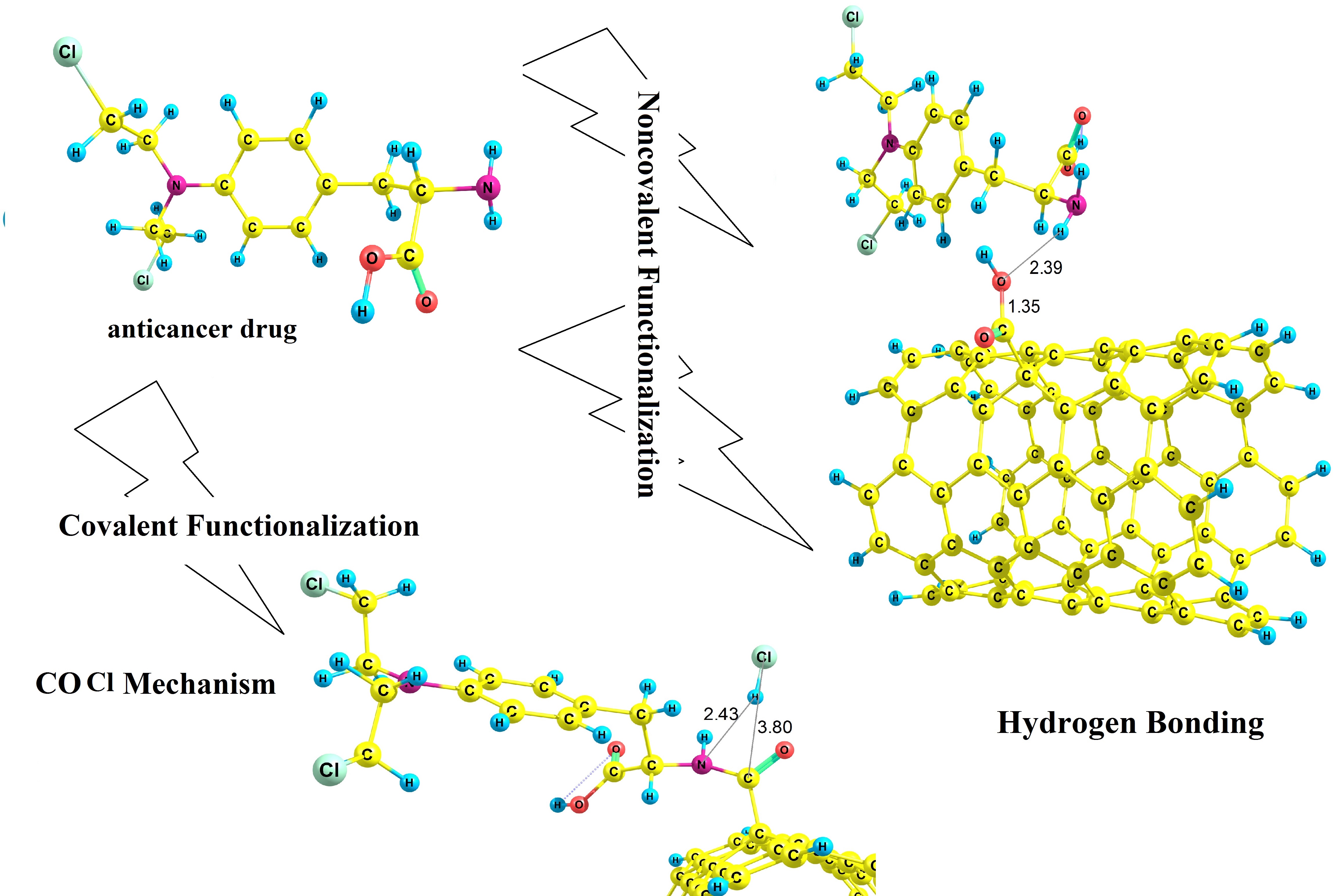NANOSYSTEMS: PHYSICS, CHEMISTRY, MATHEMATICS, 2019, 10 (4), P. 438–446
The prediction of COOH functionalized carbon nanotube application in melphalan drug delivery
Hadi Lari – Department of Chemistry, Mashhad Branch, Islamic Azad University, Mashhad, Iran; hadilari1359@yahoo.com
Ali Morsali – Department of Chemistry, Mashhad Branch, Islamic Azad University, Mashhad, Iran; almorsali@yahoo.com
Mohammad Momen Heravi – Department of Chemistry, Mashhad Branch, Islamic Azad University, Mashhad, Iran; drmh45@yahoo.com
Using quantum chemical calculations, noncovalent functionalization of melphalan drug on the surface of functionalized carbon nanotube (NT) have been examined. Quantum molecular descriptors of noncovalent interactions were investigated. It was concluded that binding of drug melphalan into COOH-functionalized NT (FNT) is exothermic and makes the system stable. Comparison between FNT and COCl functionalized NT (F’NT) showed that FNT has more binding energy and may act as a carrier for drug delivery (if the noncovalent functionalization is desired). The OH and NH2 groups of melphalan may bond to Cl (COCl mechanism) and COOH (COOH mechanism) of F’NT and FNT, respectively. Therefore, four mechanisms for the covalent functionalization have been investigated. The transition states of four pathways were optimized and activation parameters were evaluated. The high barriers of COOH pathway are greater than those of COCl pathway and therefore F’NT is suitable carrier for covalent functionalization.
Keywords: Carbon nanotube, density functional theory, functionalization, melphalan, quantum descriptors.
PACS 78.67.n; 78.67.Ch
DOI 10.17586/2220-8054-2019-10-4-438-446
